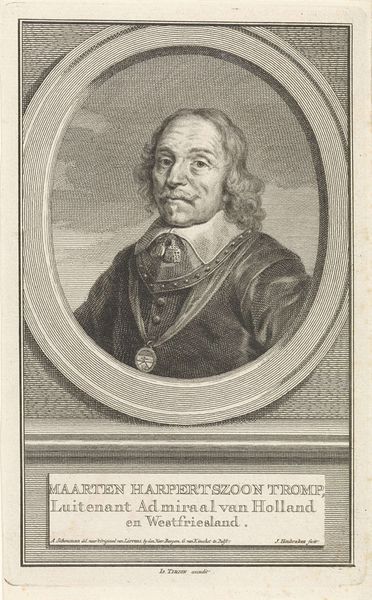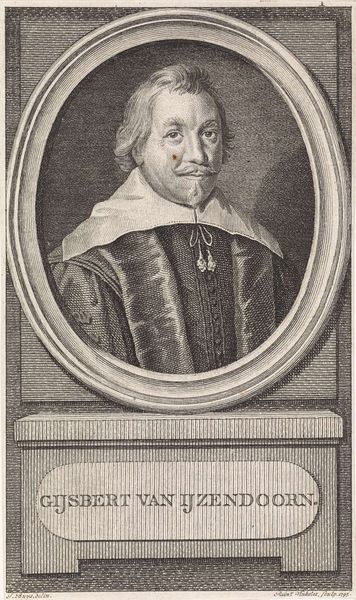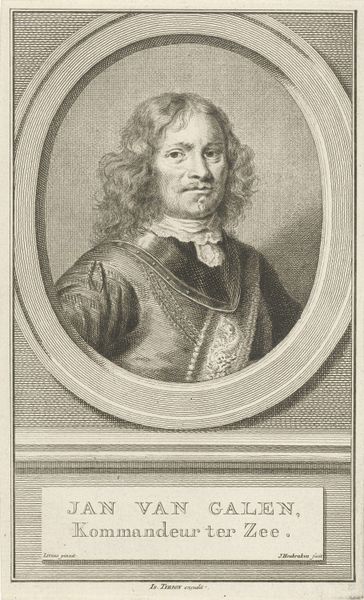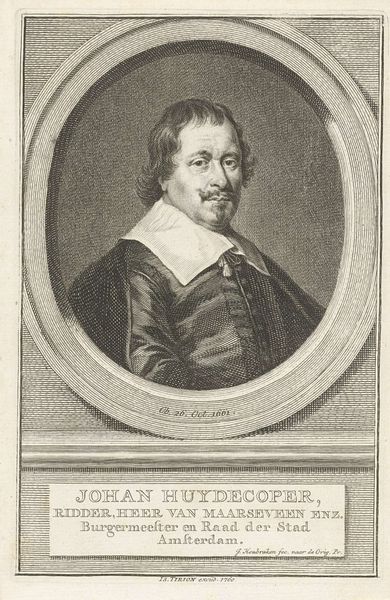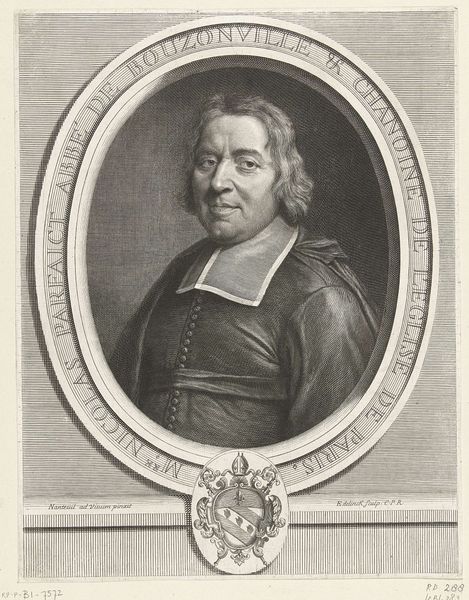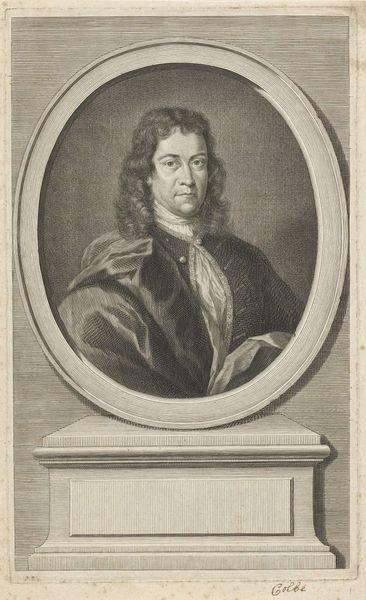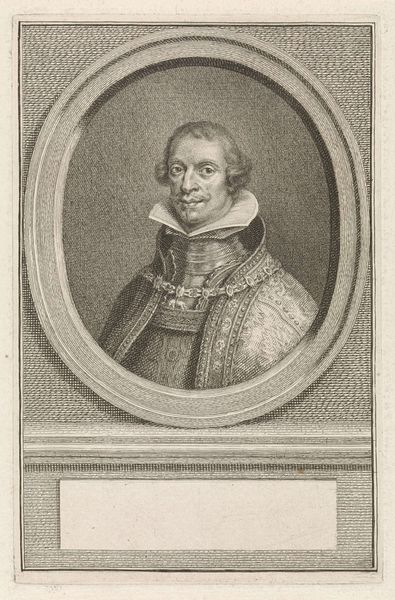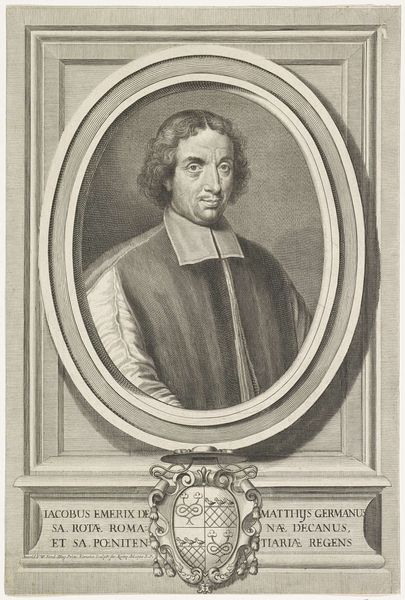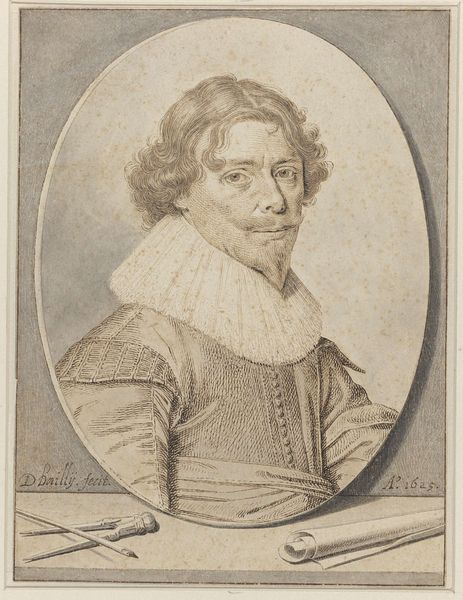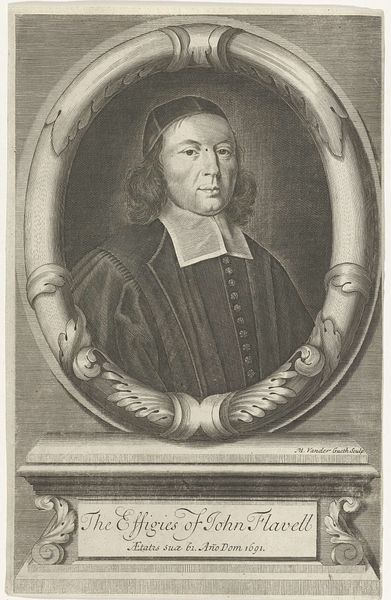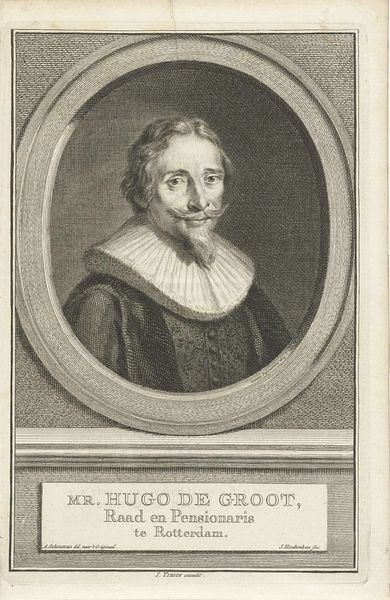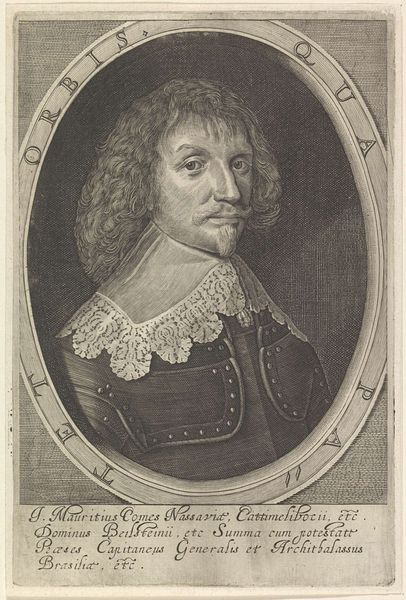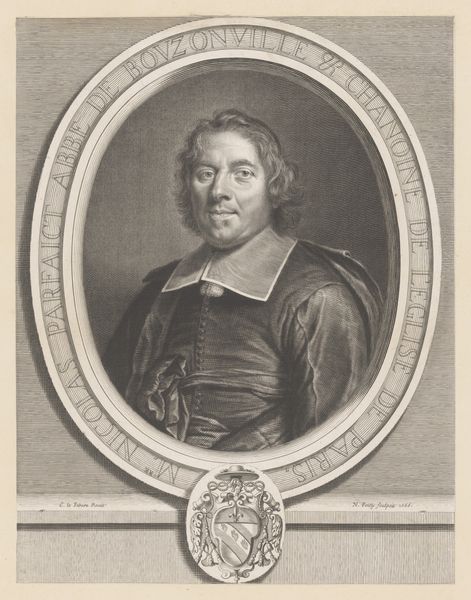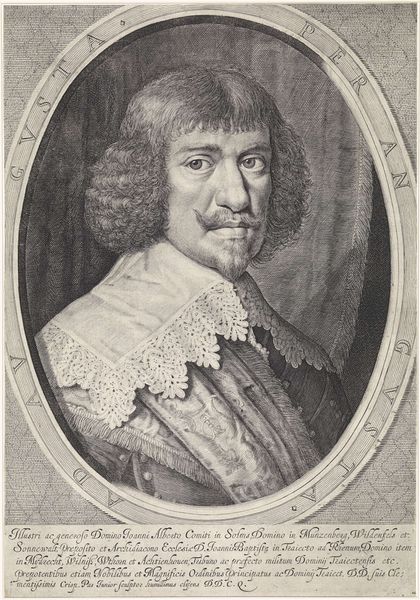
engraving
#
portrait
#
baroque
#
engraving
Dimensions: height 179 mm, width 114 mm
Copyright: Rijks Museum: Open Domain
Curator: My first impression? Austerity wrapped in lace. Something about that tightly controlled, almost mathematical engraving, combined with the sheer volume of delicate fabric… Editor: Well, this etching from between 1749 and 1759, is "Portret van Ernst Casimir, graaf van Nassau-Dietz" by Jacob Houbraken, housed right here at the Rijksmuseum. It offers a very formal depiction, adhering to conventions, of a Dutch royal figure. The inscription informs the viewer about Ernst Casimir's many honorific titles; note the importance placed on the title as stadtholder over Frisland, Groningen and Drente. Curator: Exactly, that carefully rendered text anchors him in place, while the swirl of lace and the oval frame soften the otherwise rigid composition. But is he grand? Or simply…trapped? Editor: Baroque portraiture is intrinsically linked to dynastic succession. The oval itself mirrors the protective boundaries surrounding those in power— the constant visual re-presentation of the lineage and dynastic power being paramount. The work highlights social status with that detailed depiction of the lace, while simultaneously capturing psychological insight through nuanced detail and carefully modulated expression. Look at the fine rendering of his slightly tired eyes. Curator: Ah, those eyes! They're what makes the piece for me. All the weighty symbolism is given levity with the hint of a human being trying to peer out of all that duty and honor. But in some way he cannot escape. Editor: And what does it tell us that he is portrayed here as if a prisoner, albeit willingly, given the weight of those titles inscribed in text beneath him. Ultimately these objects were circulated as social currency that visually reproduced family alliances, connections and claims to territorial power and the distribution of associated rights and privileges, of which Houbraken’s image becomes both the vessel and symbol. Curator: The overall somber palette invites introspection—what the visual rhetoric of lineage costs on the individual. Houbraken delivers both the propaganda and a hint of something much more subtle beneath it all. Editor: A thoughtful exploration of what such imagery can carry; and I find I'm grateful for those piercing eyes.
Comments
No comments
Be the first to comment and join the conversation on the ultimate creative platform.
